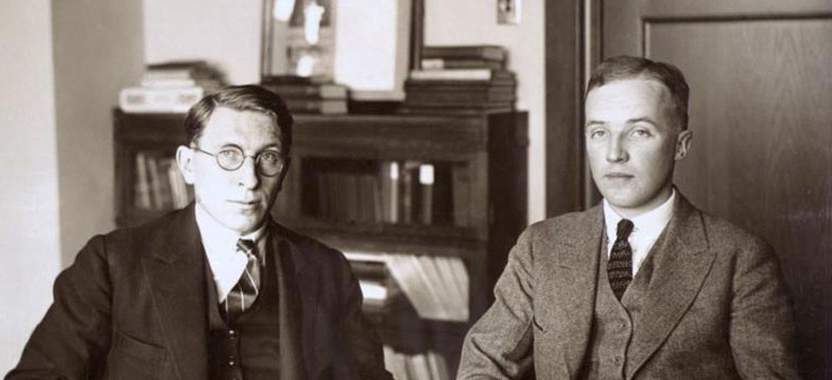Inventors of diabetes Mellitus
Details of Diabetes Mellitus described in section-know the diseases.Here describing the great people behind diabetes mellitus.
Type 1 and type 2 diabetes were identified as separate conditions for the first time by the Indian physicians Sushruta and Charaka in 400-500 CE with type 1 associated with youth and type 2 with obesity.

The discovery of a role for the pancreas in diabetes is generally ascribed to Joseph von Mering and Oskar Minkowski, who in 1889 found that dogs whose pancreas was removed developed all the signs and symptoms of diabetes and died shortly afterwards in 1910, Sir Edward Albert Sharpey-Schafer suggested that people with diabetes were deficient in a single chemical that was normally produced by the pancreas, he proposed calling this substance’insulin’, from the Latin insula, meaning island, in reference to the insulin, producing islets of Langerhans in the pancreas.
The endocrine role of the pancreas in metabolism, and indeed the existence of insulin, was further clarified in 1921, when Sir Frederick Grant Banting and Charles Herbert Best repeated the work of Von Mering and Minkowski, and went further to demonstrate they could reverse induced diabetes in dogs by giving them an extract from the pancreatic islets of Langerhans of healthy dogs.
The islets of Langerhans was discovered in 1869 by an anatomist named Paul Langerhans. He identified the keys cells in the pancreas which produce the main substance that controls glucose levels in the body.
Banting, Best, and colleagues (especially the chemist Collip) went on to purify the hormone insulin from bovine pancreases at the University of Toronto. This led to the availability of an effective treatment, insulin injections.
The distinction between what is now known as type 1 diabetes and type 2 diabetes was first clearly made by Sir Harold Percival (Harry) Himsworth, and published in January 1936.
Other landmark discoveries include
- Development of Metformin in 1922 for treatment of type 2 Diabetes
- Development of the long acting insulin NPH in the 1940s by Novo-Nordisk
- Identification of the first of the sulfonylureas in 1942
- Reintroduction of the use of biguanides for Type 2 diabetes in the late 1950s. The initial phenformin was withdrawn worldwide (in the U.S. in 1977) due to its potential for sometimes fatal lactic acidosis and metformin was first marketed in France in 1979, but not until 1994 in the US.
- The determination of the amino acid sequence of insulin (by Sir Frederick Sanger, for which he received a Nobel Prize). Insulin was the first protein that the amino acid structure was determined.
- The radioimmunoassay for insulin, as discovered by Rosalyn Yalow and Solomon Berson (gaining Yalow the 1977 Nobel Prize in Physiology or Medicine)
- The three-dimensional structure of insulin (PDB: 2INS)
- Dr Gerald Reaven’s identification of the constellation of symptoms now called metabolic syndrome in 1988
- Demonstration that intensive glycemic control in type 1 diabetes reduces chronic side effects more as glucose levels approach ‘normal’ in a large longitudinal study,[13] and also in type 2 diabetics in other large studies
- Identification of the first thiazolidinedione as an effective insulin sensitizer during the 1990s